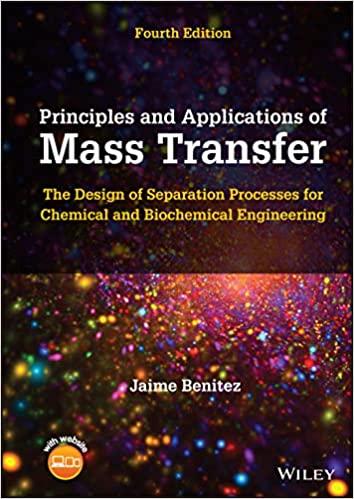In the artificial kidney, blood flowing inside a tubular membrane is dialyzed against well-stirred saline solution. Toxins
Question:
In the artificial kidney, blood flowing inside a tubular membrane is dialyzed against well-stirred saline solution. Toxins in the blood diffuse across the membrane into the saline solution, thus purifying the blood. This dialysis is often slow; it can take more than 40 hours per week (Cussler, 1997). Thus, increasing the mass transfer in this system would greatly improve its clinical value. It has been found that in modern designs of artificial kidneys (thin membranes and vigorous stirring of the saline solution) most of the resistance to toxin removal resides inside the membrane, in the blood. The mass-transfer coefficient, \(k_{c}\), for a particular toxin varies with \(v, ho\), and \(\mu\) (velocity, density, and viscosity of the blood), the diffusivity, \(\mathrm{D}_{A B}\), the diameter \(d\), and the length \(L\), of the tube. Use the Buckingham method to determine the dimensionless groups to be formed from the variables significant to this problem. Choose \(\mathrm{D}_{A B}, d\), and \(ho\) as core variables.
Step by Step Answer:






